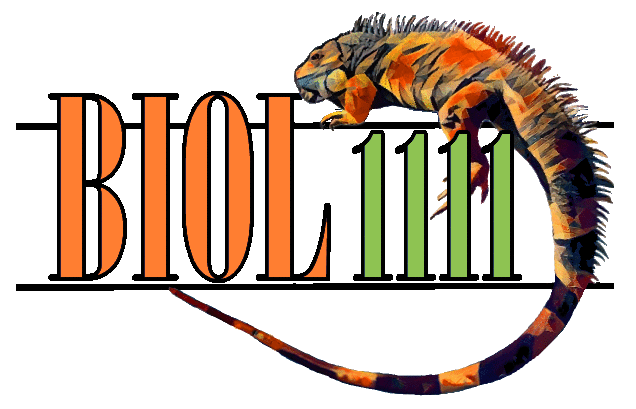 | |||||||
|
| |||||||
| Back to Institution Page | About | Certification | Key Concepts | Techniques | Resource List | Articles | |
|
| |||||||
Below is a list of articles that will help you get a better understanding of the research background.
These references have been formatted following the journal Ecology, which we use in this class.For more information on how to format your bibiography click here
There is also a list of journals where you may find additional useful information.
Click on the article information to be directed to the article (you may need to log in to the library website to access).
Click on the journal title to be taken to the journal's webpage.
| ARTCLES |
| Bao, W.D., D.H. Wang, and Z.W. Wang. 2002. Metabolism in four rodent species from Ordos arid environment in Inner Mongolia, China. Folia Zoologica 51; 3–7. |
| Bicego, K.C., R.C.H. Barros, and L.G.S. Branc. 2007. Physiology of temperature regulation: comparative aspects. Comparative Biochemistry and Physiology: 147A: 616-639. |
| Blackburn, T.M., K.J. Gaston, and N. Loder. 1999. Geographic gradients in body size: a clarification of Bergmann’s rule. Diversity and Distributions 5: 165-174. |
| Casey, T. M. 1981. Behavioral mechanisms of thermoregulation. Pages 79-114 in B. Heinrich, editor. Insect thermoregulation. John Wiley & Sons: New York. |
| Chappell, M. A. 1983. Metabolism and Thermoregulation in Desert and Montane Grasshoppers Oecologia 56: 126-131. |
| Eyman, C., M. Chamberlin, K. Case, B.D. Abrosca, and J. Kaplan. 2014. Getting warmer: Surface area to volume ratio impact on homeostasis. Journal of Introductory Biology Investigations. 1(1):68-72. |
| Foster, F., and M. Collard. 2013. A reassessment of Bergmann’s rule in modern humans. PLoS ONE, 8, DOI: 10.1371/journal.pone.0072269 |
| Gillooly, J.F., J.H. Brown, G.B. West, V.M. Savage, and E.L. Charnov. 2001. Effects of size and temperature on metabolic rate. Science 293: 2248–2251. |
| Heldmaier, G. and S. Steinlechner. 1981. Seasonal control of energy requirements for thermoregulation in the Djungarian hamster (Phodopus sungorus), living in natural photoperiod. Journal of Comparative Physiology 142B: 429–437. |
| Hoppeler, H. and E.R. Weibel. 2005. Scaling functions to body size: theories and facts. Journal of Experimental Biology 208: 1573-1574. |
| Jefimow, M., M. Wojciechowski, and E. Tegowska. 2004. Seasonal changes in the thermoregulation of laboratory golden hamsters during acclimation to seminatural outdoor conditions Comparative Biochemistry and Physiology 139A: 379–388. |
| Kronfeld-Schor, N., A. Haim, T. Dayan, N. Zisapel, M. Klingenspor, and G. Heldmaier. 2000. Seasonal thermogenic acclimation of diurnally and nocturnally active desert spiny mice. Physiological and Biochemical Zoology 73: 37–44. |
| Li, X.S., and D.H. Wang. 2005. Seasonal adjustments in body mass and thermogenesis in Mongolian gerbils (Meriones unguiculatus): the roles of short photoperiod and cold. Journal of Comparative Physiology 175B: 593–600. |
| Litzgus, J.D., S.E. DuRant, and T.A. Mousseau. 2004. Clinal bariation in body and cell size in a widely distributed bertebrate ectotherm. Oecologia 140: 551-558. |
| Long, H., C. Desilva, N. Kazarian, J. May, and C.R. Henpita. 2015. Metabolic rate as a function of ambient temperature in crickets, cockroaches, and mice. Journal of Introductory Biology Investigations. 2: 1-5. |
| Martinez del Rio, C. and W.H. Karasov. 2010. Body size and temperature: why they matter. Nature Education Knowledge 3: 10. |
| Peppe, J.P., D.L. Royer, B. Cariglino, S.Y. Oliver, S. Newman, E. Leight, G. Enikolopov, M. Fernandez-Burgos, F. Herrera, J.M. Adams, E. Correa, E.D. Currano, J.M. Erickson, L.S. Hinojosa, J.W. Hoganson, A. Iglesias, C.A. Jaramillo, K.R. Johnson, G.J. Jordan, N.J.B. Kraft, E.C. Lovelock, C.H. Lusk, U. Niinemets, J. Peñuelas, G. Rapson, S.L. Wing, and I.J. Wright. 2011. Sensitivity of leaf size and shape to climate: global patterns and paleoclimatic applications. New Phytologist 190: 724-739. |
| Pough, F.H. 1980. The advantages of ectothermy for tetrapods. The American Naturalist 115: 92-112. |
| Reich, P.B., M.G. Tjoelker, J.L. Machado, and J. Oleksyn. 2006. Universal scaling of respiratory metabolism, size and nitrogen in plants Nature 439: 457-461. |
| Schmidt-Nielson, K. 1984. Scaling: Why is Animal Size so Important? Cambridge University Press, New York, NY. |
| Shepherd, B.L., H.D. Prange, and A.P. Moczek. 2008. Some like it hot: body and weapon size affect thermoregulation in horned beetles. Journal of Insect Physiology 54: 604-611. |
| Speakman, J. R. 2005. Body size, energy metabolism and lifespan. Journal of Experimental Biology 208: 1717-1730. |
| Umbers, K.D.L., M.E. Herberstein, and J.S. Madin. 2013. Colour in insect thermoregulation: empirical and theoretical tests in the colour-changing grasshopper, Kosciuscola tristis. Journal of Insect Physiology 59: 81-90. |
| Verdú, J.R., L. Arellano, and C. Numa. 2006. Thermoregulation in endothermic dung beetles (Coleoptera: Scarabaeidae): Effect of body size and ecophysiological constraints in flight. Journal of Insect Physiology 52: 854-860. |
| White, C. R. and R.S. Seymour. 2005. Allometric scaling of mammalian metabolism. Journal of Experimental Biology 208: 1611-1619. |
| Wilson, T., T. Vang, and C.R. Henpita. 2015. How is temperature related to metabolic rate? A study of the metabolism of mice. Journal of Introductory Biology Investigations. 2:1-4. |
| Zhao, Z.J. and D.H. Wang. 2005. Short photoperiod enhances thermogenic capacity in Brandt's voles. Physiology & Behavior 85: 143–149. |
To suggest terms or concepts that you think should be included on this page, please email Bioweb Support.